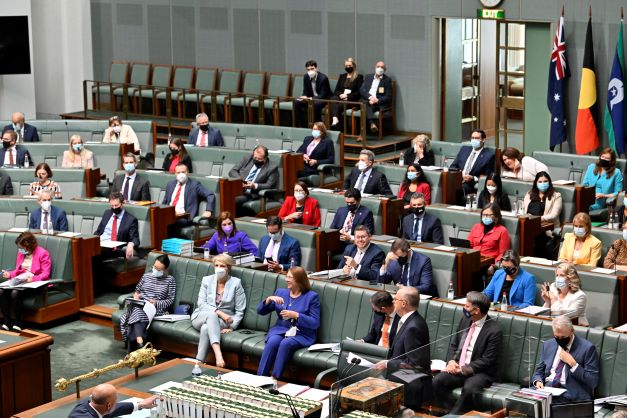What is a parliamentary majority?
The term ‘parliamentary majority’ can have different meanings.
'Parliamentary majority' can mean a party or coalition of parties must have the support of the majority of members in the House of Representatives to form government. This is also known as a government majority. With the support of more than half of the members in the House of Representatives, a government can use its parliamentary majority to pass its bills – proposed laws – and carry out its policies. In Australia, there are 150 seats in the House of Representatives and the number required to form government is 76 (half the total number of members plus 1).
‘Parliamentary majority’ can also be used to describe the number of seats the government has above those needed to form government. If a party won 90 seats at an election—but they only needed 76 to form government—you could say they have a parliamentary majority of 14 (90-76=14).
The government side of the House of Representatives

Penny Bradfield/DPS AUSPIC
Description
The leader of the government is the Prime Minister, who stands and speaks at the main table in the House of Representatives. Members of the government sit in the 5 rows behind the Prime Minister. The government is the party or coalition of parties with the support of the majority of members of the House.
Permission should be sought from DPS AUSPIC for third-party or commercial uses of this image. To contact DPS AUSPIC email: auspic@aph.gov.au or phone: 02 6277 3342.